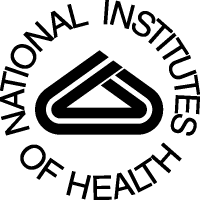SUMMARY: NIH is now calling for a round of public recommendations on the best way to implement and monitor compliance with its OA Self-Archiving mandate. My own recommendation below is designed to make the NIH mandate efficient and successful for NIH and its fundees and to ensure that it reinforces and converges with the growing number of complementary university self-archiving mandates (such as Harvard's). The gist is that (1) NIH's preferred locus of direct deposit for the postprint should be the fundee's Institutional Repository (IR) (from which it can then be downloaded to NIH) and that (2) the fulfillment conditions on the NIH grant should stipulate that the fundee institution monitors that the deposit has been made. Please make your own recommendations here.

In a very responsible and timely way, NIH has now called for a round of public
recommendations on the best way to implement and monitor compliance with
NIH's Green OA Self-Archiving mandate.
If you feel (as I do) that it is important to implement the NIH mandate in a way that will maximize its efficiency and likelihood of success, as well as making it an optimal model for all research funder mandates worldwide to follow, I urge you to make your recommendations
here.
I append my own recommendation below. It is extremely simple, and designed not only to make the NIH mandate efficient and successful for both NIH and its fundees, but also to ensure that it
reinforces and converges with the growing number of complementary
university self-archiving mandates (such as
Harvard's) rather than diverging, competing or complicating.
The gist is that (1) NIH's preferred
locus of direct deposit for the postprint should be the fundee's
Institutional Repository (IR) (from which it can then be downloaded to NIH) and that (2) the fulfillment conditions on the NIH grant should stipulate that the fundee institution
monitors that the deposit has been made.
(There is also a Question 3 for you to recommend ways to improve NIH instructions to fundees, and a Question 4 where you can -- and I hope will -- reaffirm support for the NIH policy itself.)
Here are my own recommendations for 1 and 2, and my expression of support for 4:
Question 1: Do you have recommendations for alternative implementation approaches to those already reflected in the NIH Public Access Policy?
Yes. Modify the
procedure for fulfilling the deposit requirement of the NIH self-archiving mandate in order to make it compatible with, and to reinforce, university self-archiving mandates (such as
Harvard's):
In the
NIH interface, at the
point of deposit, add a feature that allows the full-text deposit to be downloaded from the URL where the full-text has already been deposited in the fundee's institution's
Institutional Repository (IR).
And stipulate in the
overall instructions that
the preferred way to fulfill NIH's self-archiving mandate is to deposit the full-text directly in the fundee's IR and then download it to the NIH deposit site.
Question 2: In light of the change in law that makes NIH’s public access policy mandatory, do you have recommendations for monitoring and ensuring compliance with the NIH Public Access Policy?
Yes. The
optimal way to monitor and ensure compliance is by making it part of the grant fulfillment conditions for the fundee's institution that it must monitor and ensure that the deposit is made.
The best and easiest way that an institution can monitor and ensure deposit -- and at the same time encourage or mandate the self-archiving of all the rest of its own institutional research output in all disciplines (not just NIH-funded research) -- is to require direct deposit in the institution's own IR.
See: "
How To Integrate University and Funder Open Access Mandates."
Do not rely on direct deposit by publishers! It will only make the monitoring of compliance more divergent and difficult. Direct deposit should be convergent on the fundee's IR, to create a synergy with institutional mandates.
Question 3: In addition to the information already posted at http://publicaccess.nih.gov/communications.htm, what additional information, training or communications related to the NIH Public Access Policy would be helpful to you?
[See Public Access Communications and Training and suggest what would make it clearer and easier for you. The principal thing is that the deposit itself should be in your own university's IR. The deposit can then be downloaded to NIH.] Question 4: Do you have other comments related to the NIH Public Access Policy?
The NIH Green OA Self-Archiving policy is splendid, timely, historic. But it can be made orders of magnitude more successful, effective, and worthy of emulation worldwide if the one small implementational detail recommended above is adopted. It will create a synergy between funder OA self-archiving mandates like NIH's and institutional OA self-archiving mandates like Harvard's, with one convergent point of direct deposit (the institution) and both the institution and NIH jointly monitoring and ensuring compliance. It will also maximize the contribution of the NIH OA mandate to the growth and success of OA mandates, and OA, in all fields, worldwide.
Stevan Harnad
American Scientist Open Access Forum



